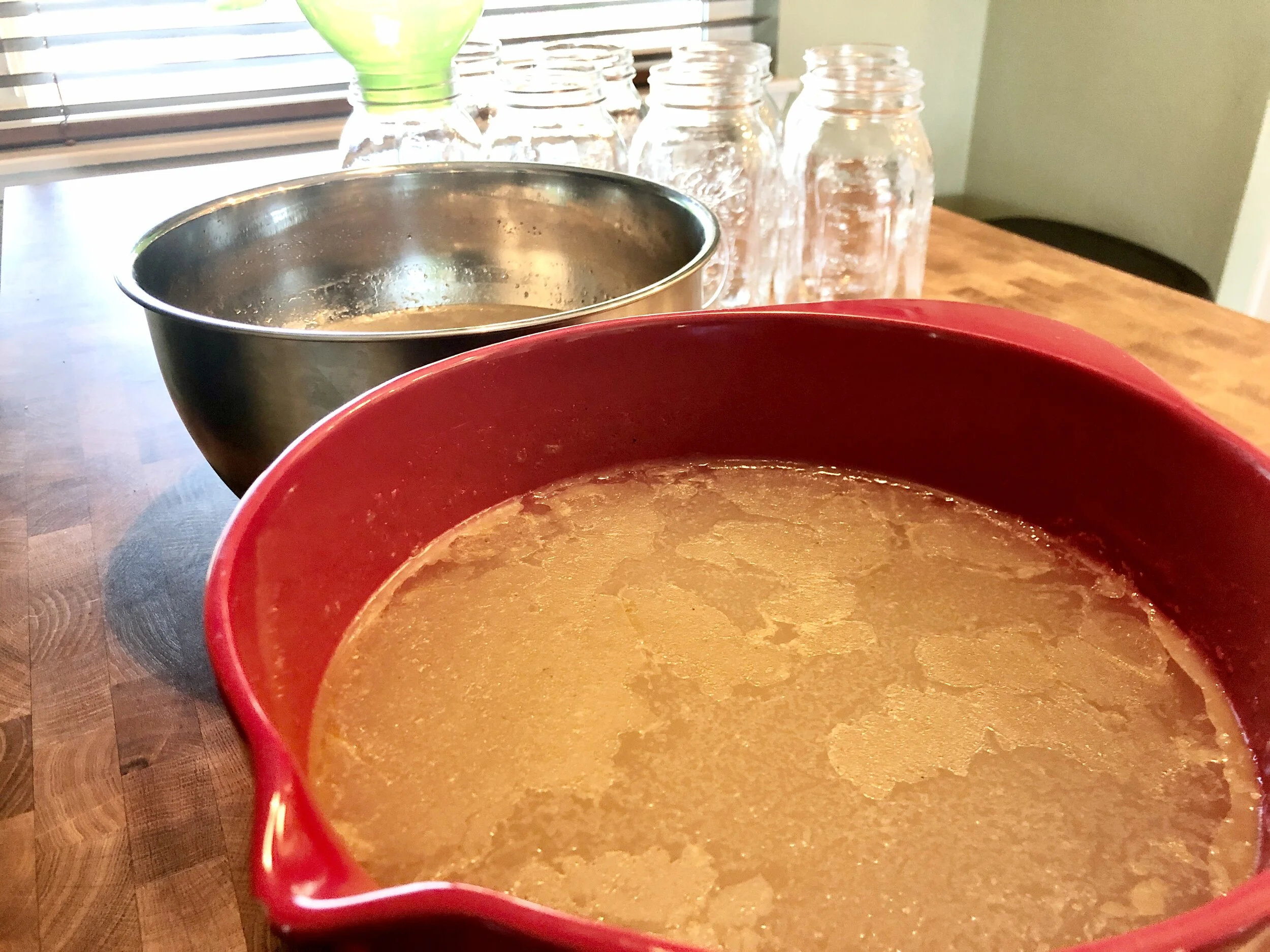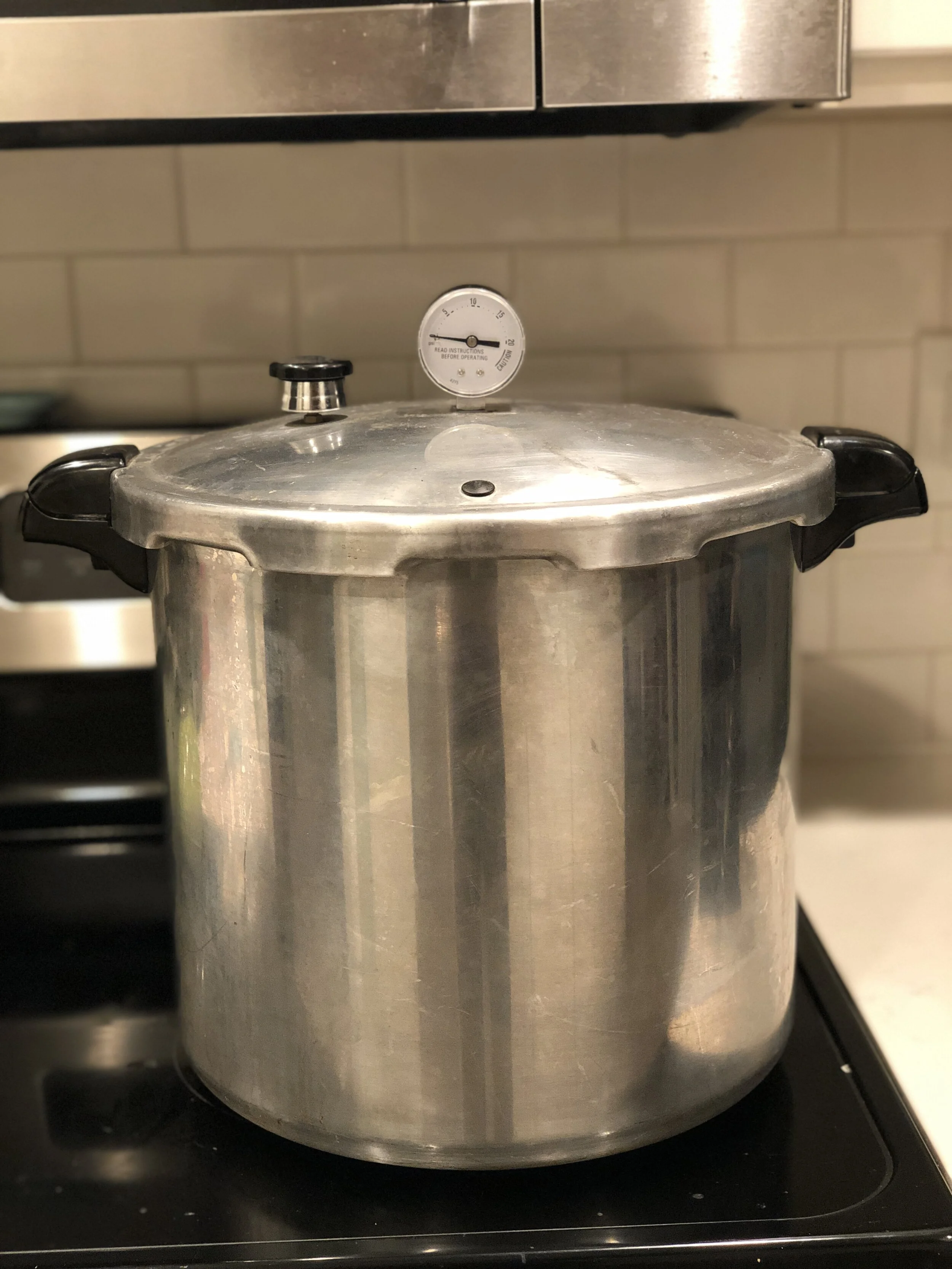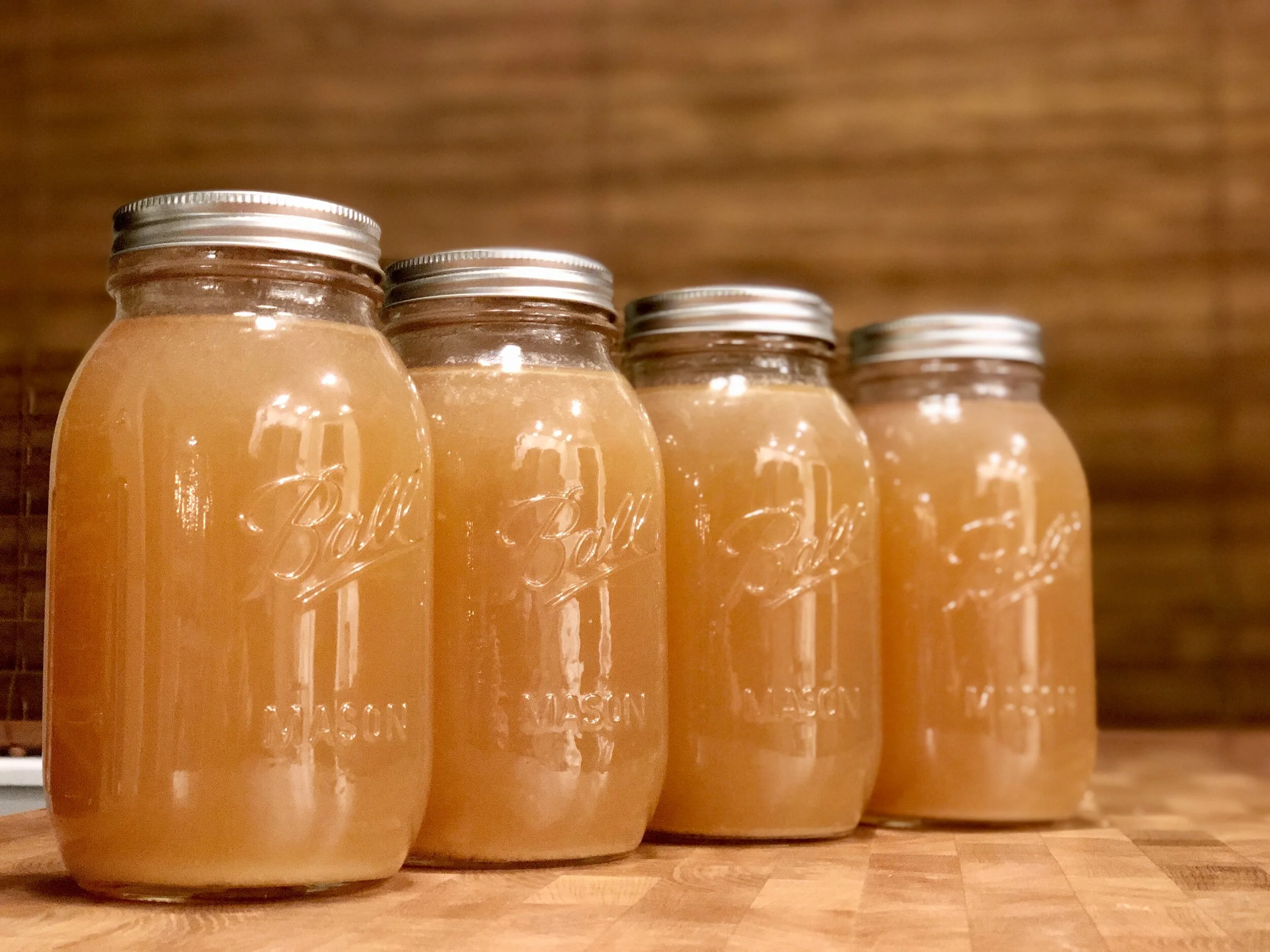How to Can Stock (Pressure Canning for Beginners)
This post contains affiliate links. By clicking these links and making a purchase we do receive a small portion of that sale, at no extra cost to you! This allows us to continue bringing you content. Thank you for your support!
Preserving is intimidating for beginners and we’re here to walk you through it. At this point, we have already made the stock and are ready to pour it into our jar. In this post, we will walk you through how to use the pressure canner with cook times specific to stocks.
Before we get started, I want to explain the difference between pressure canning and water bath canning. High acid foods (pickles, tomato sauce, jams, etc) are safe to use a water bath canning method because of the acid content; however, low acid foods (stocks, broths, soups, vegetable, etc) need to be pressure canned in order to safely preserve and kill any potential bacteria formation. Read our Preserving Basics post to learn more.
Let’s get started.
ONE: Collect all your tools
For preserving stock, you will need the following items.
jars (we prefer quart size, but pint jars work too),
new jar lids (these lids can not be re-used and must be new to ensure a good seal!),
rings (you can re-use these)
Pressure Canner (we use this one and love it)
Jar Lifter
TWO: Prepare the stock
Stocks are delicious but also full of fat. After you make the stock, you want to prepare the stock by letting it cool overnight in the refrigerator. The next morning, some of the fat will have solidified at the top and is easy to scoop out with a slotted spoon. By doing this, you will have a nice clear and clean stock. Prior to canning, you will need to reheat the stock on the stove to a simmer and fill your jars with warm stock.
THREE: Fill the Jars
Using a canning funnel, slowly fill the jars leaving 1” of head space to allow for liquid expansion when the stock boils. If you spill any stock on the top of the jars simply wipe it off using a clean damp cloth.
FOUR: Add your Lids
Once your jars are filled, top each jar with a clean lid. We warm up our lids with warm water before doing this- which allows the rubber seal to get a nice grip on the top of the jar. After you add the lids, secure the lid with a ring. Take care to not over-tighten the rings.
FIVE: Get your Jars Cookin’
Place the jars in the pressure canner and fill your pressure canner with water to the fill line (this is using a few inches of water and does not submerge the jars). Secure the lid on the canner (without the pressure regulator) and bring the water to a boil. Once boiling place the pressure gauge on to build pressure.
SIX. Monitor the pressure gauge.
The sweet spot for canning stock is maintaining 11-15 lbs of pressure. Anything under 11 is considered dangerous (meaning your stock will not preserve properly and you could get sick). But don’t be scared, pressure doesn’t build too quickly or lose pressure too quickly where you won’t notice.
SEVEN. At 11 lbs of Pressure, Start Your Timer.
Once your gauge reads 11 lbs, reduce the heat to medium and set your timer. Depending on what jars your using with determine the time: Pint Jars = 20 minutes / Quart Jars = 25 minutes. And again, this timer starts when you reach the 11 lbs of pressure.
EIGHT. Let cool.
After the required time, take the pressure cooker off the heat source and let the pressure naturally reduce to 0. For your safety, do not open the lid or take off the pressure regulator! Take your time and let this happen naturally- it only takes 20-30 minutes.
NINE. Pull Your Jars Out.
Once the pressure gauge reads 0 and the pressure tab in back is flush, then you are clear to remove the pressure regulator, open the lid, and pull your jars out! Over the next 24 hours you will hear the glorious ‘pop’ meaning your jars are sealed properly. Another way to check is the lid itself is depressed.
And that’s it! We hope this guide answers your questions, if you have any more please comment below! If you’d like to see this in video format, head on over to our YouTube for a visual of this guide.
Thanks for reading! Be sure to like this post and subscribe to our content to be in the know of all Our LIberty House happenings.
Happy Preserving!
-Lucas and Beth




